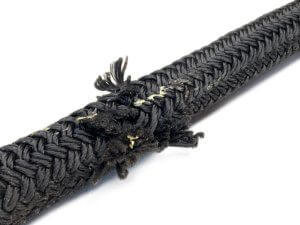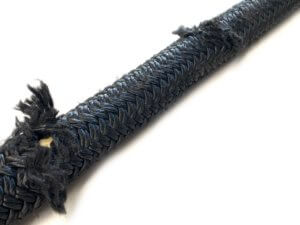When the new mooring lines are taken out of the delivery package, take great care to layout the mooring lines as straight as possible. It is advised to lay the mooring lines out as long as possible to identify if there are any induced twists in the rope, caused by uncoiling and handling of the rope. Each completed twist or turn in the rope reduces its break load by 7%. By avoiding and removing this you give the dock line the best possible start.
Take care when running out the line not to drag the line over rough or heavily contaminated surfaces. Dirt and grit accumulated in the rope can act like sandpaper and accelerate wear.



